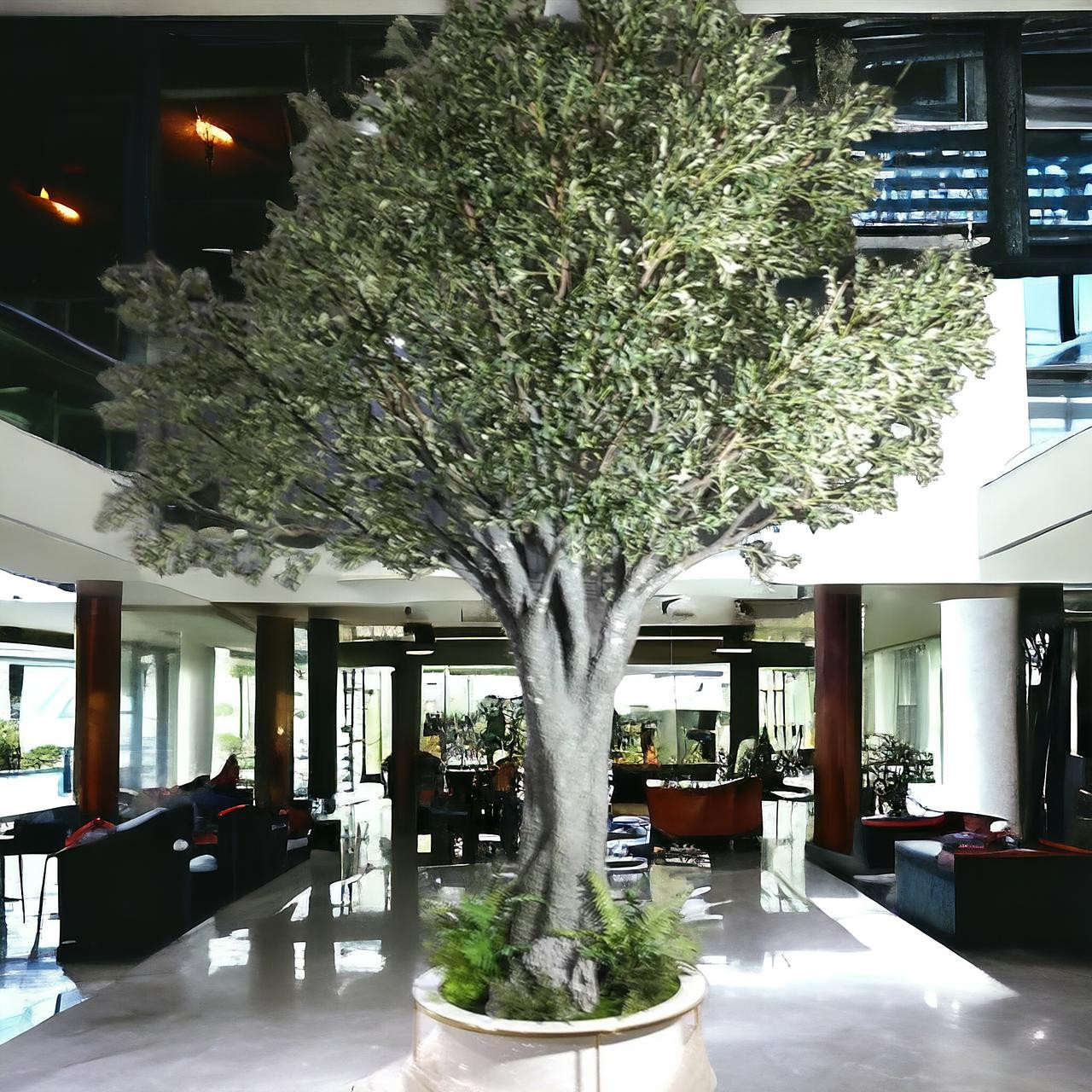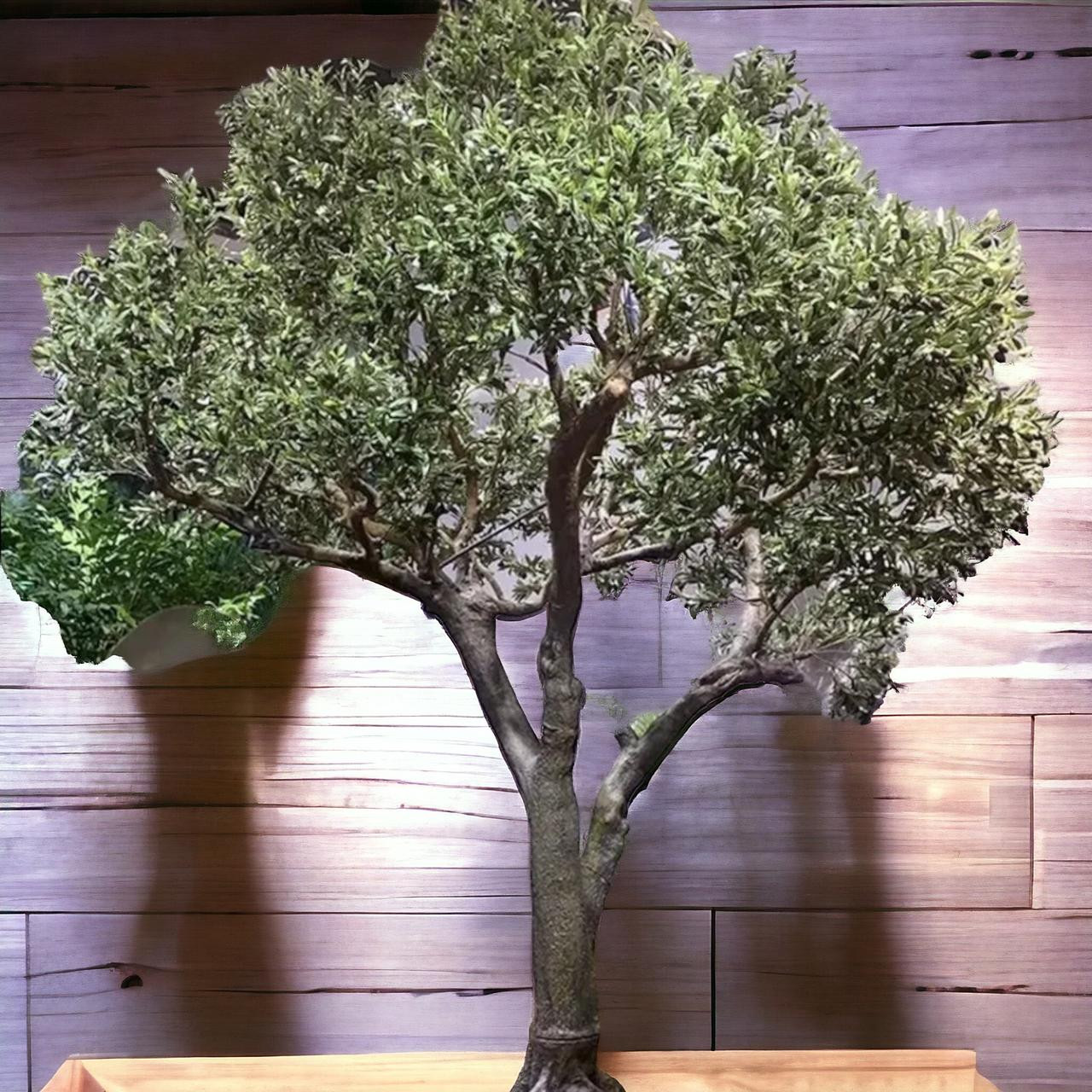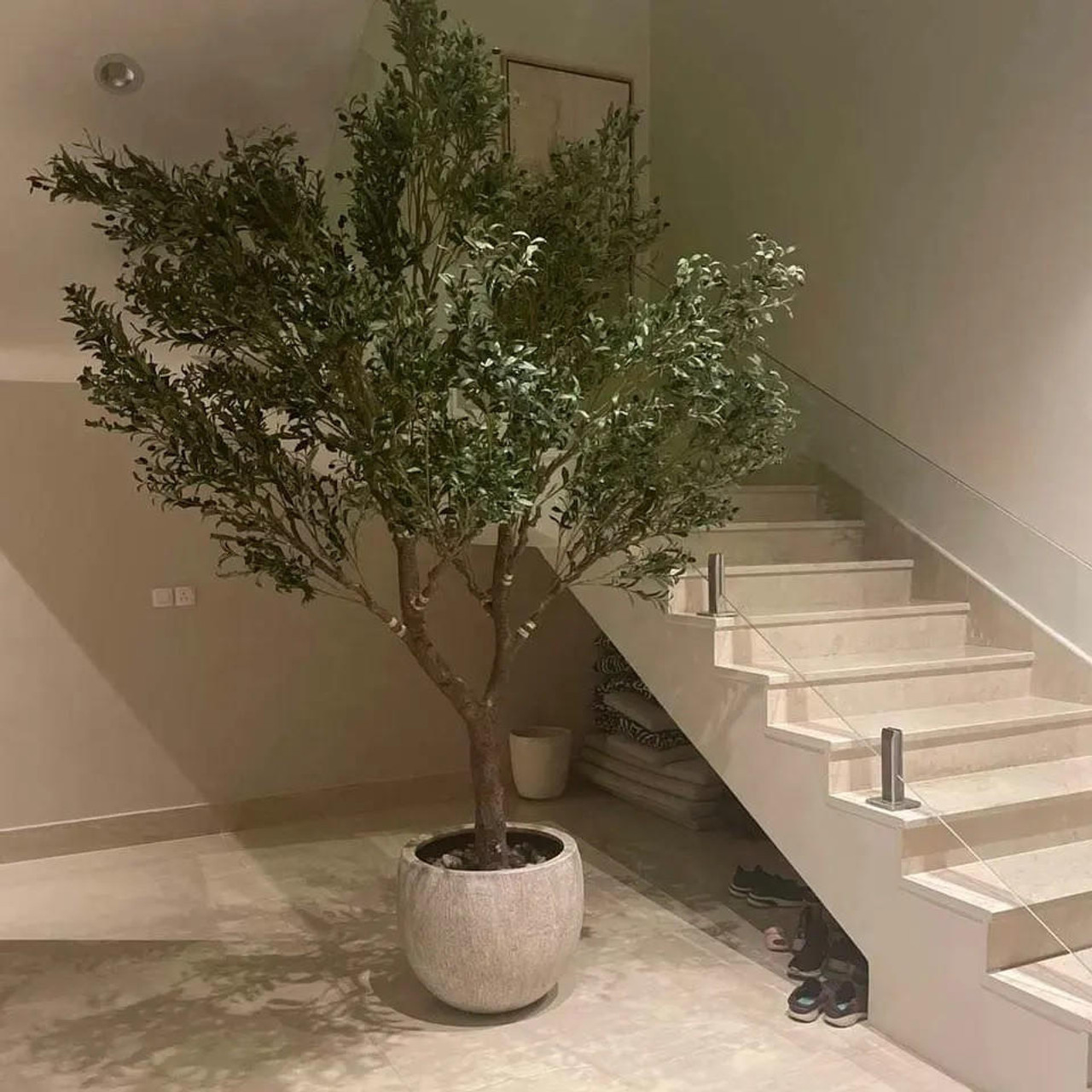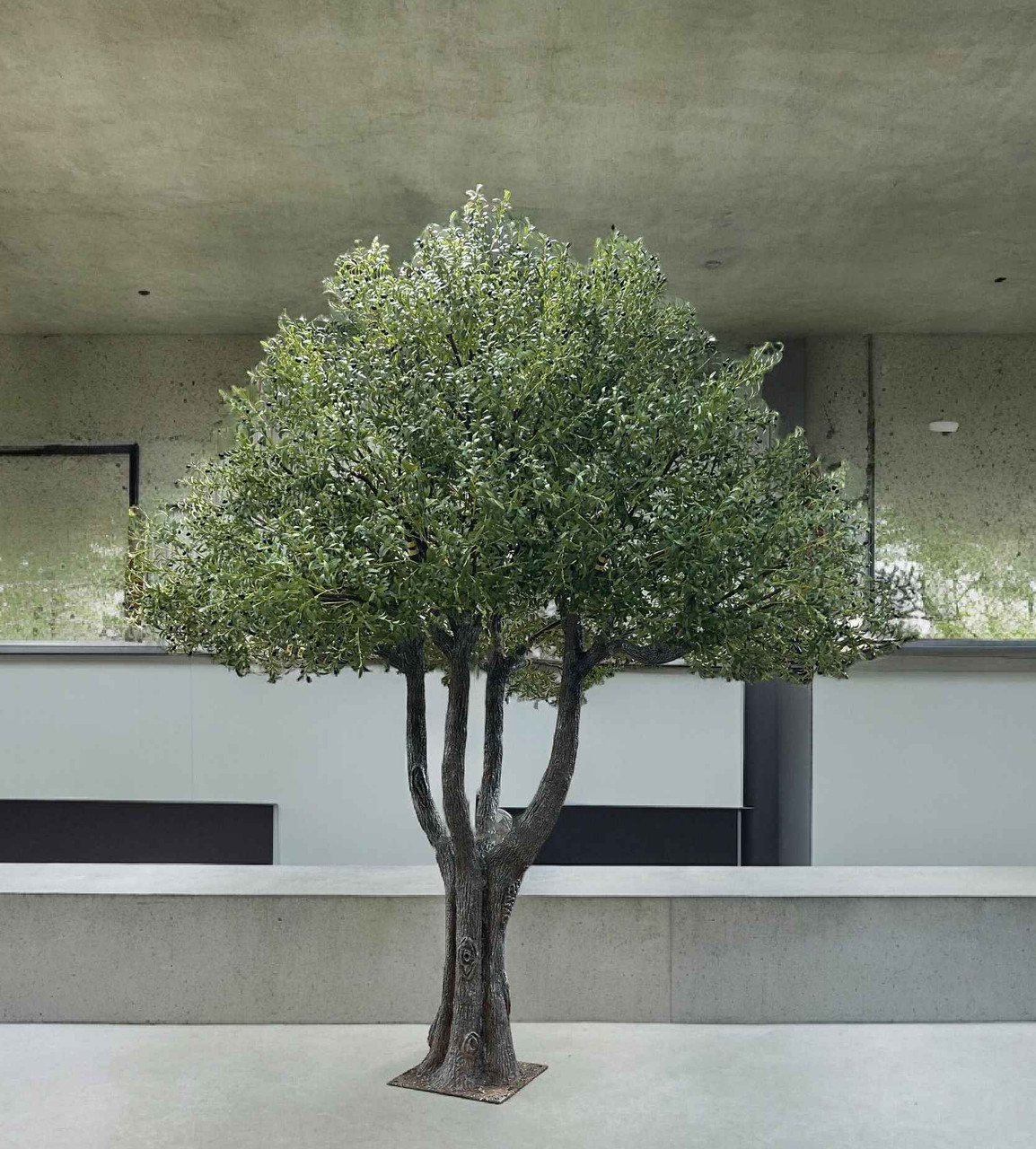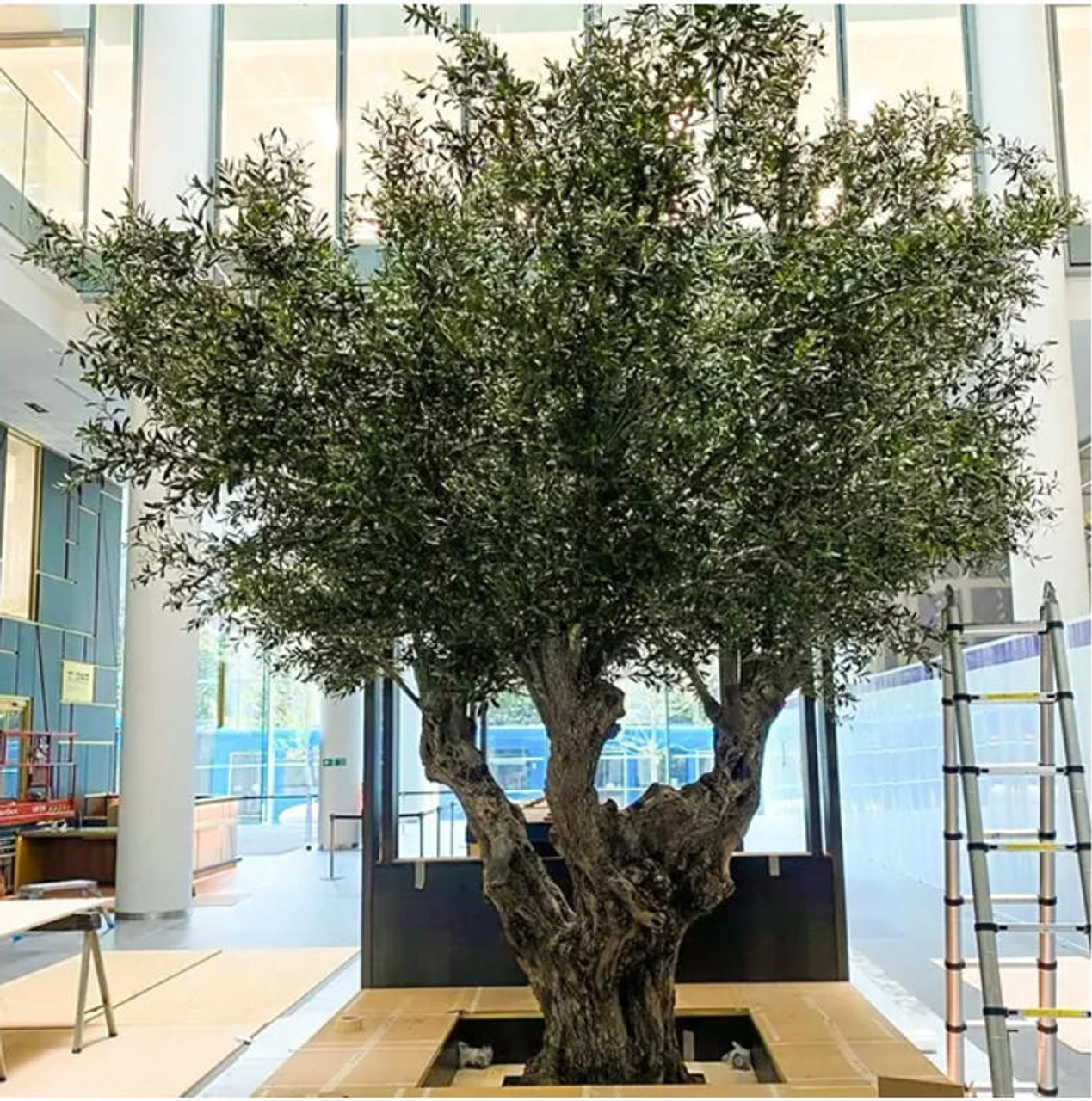Olive Trees in Urban Landscapes: Benefits and Challenges
Aug 10, 2024
Olive Trees in Urban Landscapes: Benefits and Challenges
The integration of natural elements into urban environments is a key concern for contemporary architecture and urban planning. As cities grow increasingly dense and the pressures of urbanization intensify, the importance of green spaces and the use of vegetation within urban landscapes has become more apparent. Among the various plants and trees chosen for urban greening, the olive tree stands out as a particularly intriguing option. Known for its historical and cultural significance, the olive tree also offers a range of aesthetic and environmental benefits. However, the incorporation of olive trees into urban settings is not without its challenges. This blog explores the multifaceted role of olive trees in urban landscapes, considering both their advantages and the potential obstacles to their successful cultivation in non-traditional settings.
The Aesthetic Appeal of Olive Trees in Urban Landscapes
One of the primary reasons for the increasing popularity of olive trees in urban landscapes is their undeniable aesthetic appeal. The olive tree (Olea europaea) is a plant of great beauty and character, with its gnarled trunk, silvery-green leaves, and modest yet charming fruit. This tree carries with it a sense of history and cultural richness that few other plants can match.
Timeless Beauty and Architectural Harmony
The olive tree’s visual characteristics make it an ideal candidate for inclusion in urban landscapes. Its twisted and textured trunk provides a sense of permanence and resilience, while its delicate foliage creates a contrast with the often rigid and linear forms of urban architecture. The soft, muted tones of the olive tree’s leaves blend seamlessly with a variety of architectural styles, from the classical to the contemporary. Whether used as a focal point in a modern plaza or as part of a more extensive green space in a residential development, the olive tree adds an element of timeless beauty that enhances the overall aesthetic quality of the environment.
Cultural and Symbolic Significance
Beyond its visual appeal, the olive tree also carries deep cultural and symbolic significance, particularly in Mediterranean regions where it has been cultivated for thousands of years. The olive tree is a symbol of peace, wisdom, and prosperity, and its presence in an urban setting can evoke a sense of continuity with the past. This connection to cultural heritage can be particularly powerful in cities with significant Mediterranean influences, but it also resonates more broadly, offering a universal symbol that speaks to ideas of resilience, endurance, and harmony with nature.
Versatility in Design
Olive trees are also highly versatile in terms of their application within urban design. They can be used in a variety of ways, from individual specimens planted in prominent locations to create a striking visual impact, to rows of trees lining streets or walkways, providing shade and defining space. Olive trees can also be integrated into rooftop gardens, courtyards, and even indoor spaces, where their sculptural forms and modest size can be effectively showcased. This versatility allows architects and urban planners to use olive trees in innovative and creative ways, enhancing the visual and functional qualities of urban environments.
Environmental Benefits of Olive Trees in Urban Settings
The incorporation of olive trees into urban landscapes offers not only aesthetic benefits but also significant environmental advantages. As cities grapple with issues related to climate change, air quality, and the urban heat island effect, the role of vegetation in mitigating these challenges has come to the forefront. Olive trees, with their particular characteristics, can contribute meaningfully to the creation of more sustainable and livable urban environments.
Climate Adaptability and Drought Resistance
One of the most compelling reasons for the use of olive trees in urban settings is their adaptability to a range of climatic conditions, particularly in regions with hot, dry summers and mild winters. Olive trees are native to the Mediterranean basin, where they have evolved to thrive in challenging environments characterized by limited water availability and high temperatures. This natural drought resistance makes olive trees an excellent choice for urban areas where water conservation is a priority.
In many cities, the demand for water is a critical concern, and the use of drought-resistant plants can help reduce the strain on local water resources. Olive trees require significantly less water than many other common urban trees, making them a sustainable choice for cities looking to balance green space with water conservation efforts. Their ability to survive and even thrive in arid conditions means that olive trees can continue to provide environmental benefits with minimal maintenance, even in the face of increasingly unpredictable climate patterns.
Air Quality Improvement and Carbon Sequestration
Like all trees, olive trees play a crucial role in improving air quality by absorbing carbon dioxide and releasing oxygen through the process of photosynthesis. This makes them valuable assets in urban areas where air pollution is a persistent problem. In addition to their role in carbon sequestration, olive trees can also help to filter pollutants from the air, trapping particulates on their leaves and contributing to cleaner, healthier urban environments.
While olive trees may not be as large or fast-growing as some other urban tree species, their longevity and resilience make them effective long-term contributors to air quality improvement. Moreover, the evergreen nature of olive trees ensures that they continue to provide these benefits year-round, unlike deciduous trees that lose their leaves in the winter.
Mitigation of the Urban Heat Island Effect
The urban heat island effect, where urban areas experience higher temperatures than their rural surroundings due to the concentration of buildings, roads, and other heat-absorbing surfaces, is a significant concern for many cities. The presence of trees and other vegetation can help mitigate this effect by providing shade and cooling the air through the process of transpiration.
Olive trees, with their dense canopies and ability to thrive in hot climates, are well-suited to this role. When planted strategically in urban areas, olive trees can provide much-needed shade for streets, sidewalks, and buildings, reducing the need for air conditioning and lowering overall energy consumption. Their contribution to cooling urban environments can make cities more comfortable and livable, particularly during the increasingly frequent and intense heatwaves associated with climate change.
Challenges of Growing Olive Trees in Urban Environments
While the benefits of incorporating olive trees into urban landscapes are clear, there are also significant challenges associated with growing these trees in non-traditional settings. Understanding and addressing these challenges is essential for ensuring the successful integration of olive trees into urban environments.
Soil and Root Space Constraints
One of the primary challenges of growing olive trees in urban areas is the issue of soil quality and root space. In their natural environment, olive trees are accustomed to growing in well-drained, rocky soils with plenty of room for their roots to spread. However, urban environments often present the opposite conditions—compacted soils with poor drainage and limited root space due to the presence of pavement, buildings, and underground infrastructure.
For olive trees to thrive in urban settings, careful attention must be paid to soil preparation and root space management. This may involve the use of specially designed tree pits or planting beds that provide adequate drainage and allow for root expansion. In some cases, soil amendments may be necessary to improve the quality and structure of the soil, ensuring that the trees have access to the nutrients and moisture they need to grow.
Pest and Disease Management
Another challenge associated with growing olive trees in urban environments is the potential for pest and disease issues. Olive trees are susceptible to a variety of pests and diseases, including olive fruit fly, olive moth, and verticillium wilt. In urban areas, where the trees may be isolated from other olive groves and subject to different environmental conditions, the risk of pest and disease outbreaks can be heightened.
Effective pest and disease management is crucial for maintaining the health and vitality of urban olive trees. This may involve regular monitoring for signs of infestation, the use of integrated pest management (IPM) techniques, and the application of appropriate treatments when necessary. Additionally, selecting disease-resistant olive varieties and implementing proper cultural practices, such as pruning and sanitation, can help reduce the risk of pest and disease problems.
Maintenance and Pruning
Olive trees require regular maintenance and pruning to ensure their health and to maintain their aesthetic appeal in urban settings. Pruning is essential for controlling the size and shape of the tree, removing dead or diseased wood, and promoting air circulation within the canopy. However, pruning can be a labor-intensive process, and improper pruning techniques can lead to poor tree health or unattractive growth patterns.
In urban environments, where space may be limited and accessibility can be challenging, regular maintenance and pruning may require specialized equipment and expertise. Urban planners and landscape architects must consider these factors when incorporating olive trees into their designs, ensuring that adequate resources are available for ongoing care and maintenance.
Winter Hardiness and Cold Tolerance
While olive trees are well-adapted to hot, dry climates, they are not particularly cold-hardy. In regions with cold winters or frequent frost events, olive trees may suffer damage or even die if they are not properly protected. This presents a challenge for urban planners in colder climates who wish to incorporate olive trees into their landscapes.
To address this challenge, it may be necessary to select cold-tolerant olive varieties or to provide winter protection, such as wrapping the trees in frost cloth or installing windbreaks. In some cases, olive trees may be grown in containers that can be moved indoors or to a sheltered location during the winter months. However, these measures can add complexity and cost to the maintenance of urban olive trees, making them less practical for widespread use in colder regions.
Best Practices for Integrating Olive Trees into Urban Landscapes
Despite the challenges, there are several best practices that can help ensure the successful integration of olive trees into urban landscapes. By following these guidelines, architects, urban planners, and landscape designers can maximize the benefits of olive trees while minimizing potential issues.
Site Selection and Soil Preparation
Careful site selection is critical for the successful growth of olive trees in urban environments. Ideally, olive trees should be planted in locations that receive full sun and have well-drained soil. In areas where soil quality or drainage is a concern, raised planting beds or specially designed tree pits may be necessary to create suitable growing conditions.
Soil preparation should include the incorporation of organic matter to improve soil structure and fertility. In some cases, it may be necessary to amend the soil with sand or gravel to improve drainage, particularly in areas with heavy clay soils. Ensuring that the planting site provides adequate root space is also essential for the long-term health of the trees.
Selecting the Right Olive Varieties
Not all olive trees are created equal, and selecting the right variety is crucial for ensuring success in an urban environment. Factors to consider when selecting olive varieties include climate adaptability, pest and disease resistance, and growth habit. For example, dwarf or semi-dwarf varieties may be more suitable for urban settings where space is limited, while cold-tolerant varieties may be necessary in regions with harsh winters.
It is also important to consider the intended use of the olive trees—whether for ornamental purposes, fruit production, or both. Some varieties are better suited for producing high-quality olive oil, while others are prized for their decorative appearance. By selecting the right varieties, urban planners can ensure that the trees meet the specific needs and goals of the landscape design.
Implementing Sustainable Maintenance Practices
Sustainable maintenance practices are essential for the long-term success of olive trees in urban environments. This includes regular pruning to maintain tree health and appearance, as well as monitoring for pests and diseases. Integrated pest management (IPM) techniques, which emphasize the use of natural predators and cultural practices to control pests, should be prioritized to reduce the need for chemical treatments.
Water conservation is also a key consideration, particularly in regions where water resources are limited. Drip irrigation systems, mulching, and the use of drought-resistant olive varieties can all help reduce water usage while ensuring that the trees receive the moisture they need to thrive.
Incorporating Olive Trees into Urban Planning and Design
Finally, it is important to consider how olive trees can be effectively incorporated into broader urban planning and design initiatives. Olive trees can be used to enhance streetscapes, create shade and cooling in public spaces, and contribute to the overall aesthetic and environmental quality of the urban environment. By integrating olive trees into comprehensive urban greening strategies, cities can create more sustainable, livable, and beautiful environments for their residents.
Conclusion: The Future of Olive Trees in Urban Landscapes
As urbanization continues to shape the way we live and interact with our environments, the integration of natural elements like olive trees into urban landscapes will become increasingly important. Olive trees offer a unique combination of aesthetic appeal, cultural significance, and environmental benefits, making them valuable assets in the creation of sustainable and resilient cities.
However, the successful incorporation of olive trees into urban settings requires careful planning, thoughtful design, and ongoing maintenance. By understanding and addressing the challenges associated with growing olive trees in non-traditional environments, architects, urban planners, and landscape designers can unlock the full potential of these remarkable trees, creating urban landscapes that are not only beautiful but also sustainable and enduring.
The future of urban landscapes lies in our ability to harmonize the built environment with the natural world, and olive trees, with their rich history and enduring qualities, offer a powerful symbol of this potential. As we look to the future, let us embrace the lessons of the past and the innovations of the present, ensuring that the olive tree continues to thrive as a vital part of our urban environments.


